It’s Trans Awareness Week, the week leading up to Trans Day of Remembrance on
November 20th. When we say that Autostraddle is website primarily for queer women,
we
want to be 100% clear that that includes queer trans women and that it’s important to
honor
trans women year-round, not just in obituaries. So all week long we’re going to be
spotlighting articles by and about trans women, with a special focus on trans women
of
color.
We hope you’ll love reading everything as much as we’ve loved writing and editing it.
It seems like when people talk about early trans pioneers from history we only ever hear two names — Lili Elbe and Christine Jorgensen. Things are getting better and now we also talk about TWOC leaders like Sylvia Rivera and Marsha P. Johnson. While it’s true that Elbe and Jorgensen are important historical figures, and while it’s true that Rivera and Johnson are legends who we owe worlds to, it’s also important to talk about other trans women who might be less well-known, but have had their own big impact on trans history.
It’s usually pretty suspect to prescribe modern identities to people from the past, but no matter which way the deceased people on this list would identify if they were alive today, they remain important figures in the history of American (and some international) trans and gender non-conforming people and the way people challenge society’s rules for gender. This list is only the tip of the iceberg; there are dozens and dozens of other trans pioneers without whom we wouldn’t be here today.
As a general warning, some of the pages I’m going to link to contain misgendering and/or outdated terminology.
1. Mary Jones
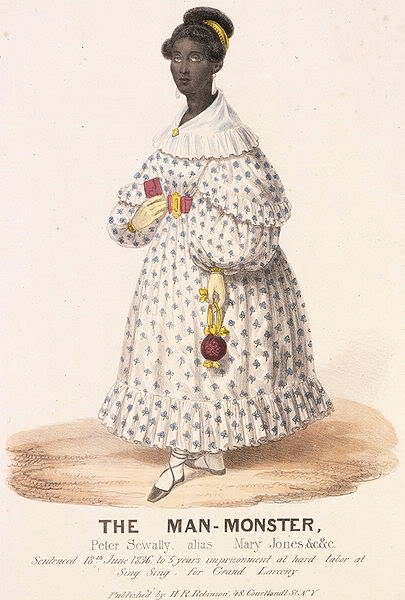
A really transmisogynistic lithograph printed in New York newspapers during Jones’ trial.
Our first figure comes all the way back from 1836. Mary Jones was a Black sex worker in New York City whose story is one of the earliest that we have of a trans woman in the United States of America. In the summer of 1836, Jones was arrested after a male client slept with her. You see, she wasn’t just a sex worker, she was also a pickpocket, and had stolen $99 (which would be at least $2,600 in today’s money, you go girl) from a white mason worker named Robert Haslem. When she was arrested, the police searched her and discovered that she wasn’t a cis woman. Jones’ trial quickly became the talk of the town, as she appeared in court dressed as a woman in elegant clothing (natch) and explained to the court, “I have always attended parties among the people of my own Colour dressed in this way — and in New Orleans I always dressed in this way.” She also apparently was able to trick men into thinking they were having sex with a cis woman because she “had been fitted with a piece of cow pierced and opened like a woman’s womb, held up by a girdle.” So either men in the 1830s were exceptionally clueless about women’s bodies or they would take any excuse they could find to explain why they were having sex with a trans woman. Or probably both. The court was, unsurprisingly, very horrible towards her, laughing, pointing and even snatching off her wig at one point. She was finally sentenced to five years in state prison for Grand Larceny.
2. Frances Thompson
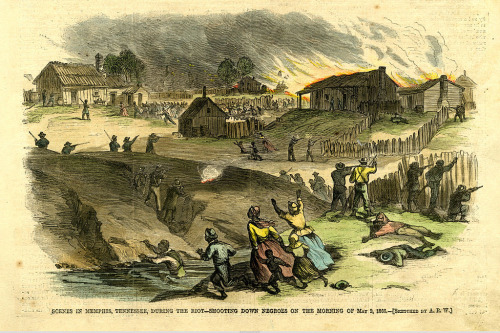
A depiction of the Memphis Riots.
Thompson, a former slave, is quite possibly the first trans woman to testify before a congressional committee in the United States. In 1866 she testified before a committee investigating a riot that had occurred in Memphis, Tennessee. For three days in May of 1866, white men rioted throughout a community of emancipated slaves in Memphis. At least 48 African Americans were murdered, with close to 80 more injured, and five women testified to being raped. She testified that seven white rioters had broken into the house that she shared with another former slave, Lucy Smith. After the men demanded that they find “some women to sleep with,” they raped Thompson and Smith. Ten years later, Thompson was arrested for “being a man dressed in women’s clothing.” Her arrest for “transvestism” was used by newspapers in Memphis to smear her name discredit her story that she was raped.
3. Lucy Hicks Anderson
Born in 1886, Lucy Hicks Anderson is one of the earliest fighters for marriage equality in the United States. She grew up in Kentucky, where she started presenting as a girl and going by the name Lucy at an early age. She later moved to Texas, then to New Mexico, where she married Clarence Hicks, then to California where she lived in Oxnard and operated a brothel. After divorcing Hicks in 1929, she married Reuben Anderson, a soldier, in 1944. Her signing of this marriage licence led to a perjury charge against her, as on it she swore that there were “no legal objections” to the marriage. She told reporters, “I defy any doctor in the world to prove that I am not a woman. I have lived, dressed, acted just what I am, a woman.” Still, she was found guilty of perjury and later fraud because she received allotment checks as the wife of a US Army soldier.
4. Coccinelle (Jacqueline Charlotte Dufresnoy)
Coccinelle (the French word for ladybug) was the professional name of Dufresnoy, a French actress, entertainer, singer and activist, and one of the first people to undergo a widely publicized successful gender confirmation surgery in Europe. Born in Paris in 1931, Dufresnoy began taking hormones in 1952 and made her debut as a showgirl the next year. She quickly became popular and soon joined other famous trans showgirls April Ashley, Marie-Pierre Pruvot and Amanda Lear as a regular at the Le Carrousel de Paris nightclub. She became so popular that she was featured in several films, had an Italian singer, Ghigo Agosti, dedicate a song to her, and starred in her own revue, “Cherchez la Femme.” After she underwent her operation, France changed its laws to allow for changes to be made on birth certificates following gender confirmation surgery. Her first marriage was also established trans people’s right to marry in France. She also founded the trans support group Devenir Femme and helped establish the Center for Aid, Research and Information for Trnassexuality and Gender Identity.
5. Louise Lawrence
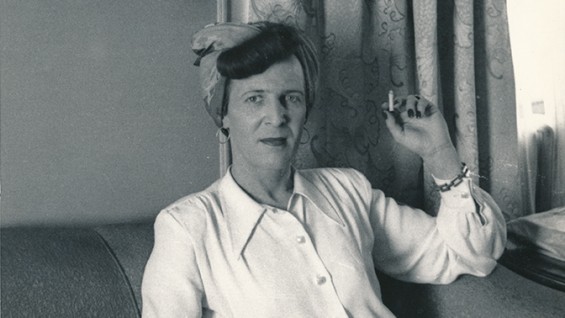
Louise Lawrence with cigarette. Courtesy of Kinsey Institute, Indiana University
Lawrence began living full-time as a woman in the 1940s in San Francisco. There she worked as an artist and the manager for an apartment building for women, where she lived with her partner, a woman named Gay. In the following decade she created a widespread correspondence network with other transgender people throughout the US and Europe that laid the groundwork for Virginia Prince’s eventual Transvestia magazine subscription list. Lawrence worked with both Alfred Kinsey and Dr. Harry Benjamin on their work with trans people. Her work to connect trans people across the world was extremely important in the creation of trans organizations and communication in a time when those things didn’t really exist.
6. Carlett Brown
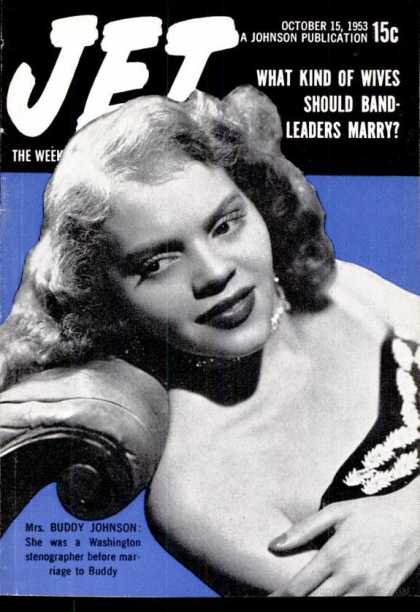
Carlett Brown on the cover of Jet Magazine.
Shortly after Christine Jorgensen got her much publicized gender confirmation at the end of 1952, another woman, Carlett Brown sought to undergo a similar procedure. Brown was an African American Navy vet who was working as a female impersonator and “shake dancer” in nightclubs. While in the Navy, she had discovered that she was intersex, and while the doctors suggested that she have surgery to become more “typically male,” she instead decided that she wanted to undergo the same operation Jorgensen did. She ran into a problem when she discovered that the nations who offered the surgeries she was seeking didn’t allow foreign nationals to undergo the surgery. Her plan was to travel to Europe and renounce her US citizenship, saying “I just want to become a woman as quickly as possible, that’s all. I’ll become a citizen of any country that will allow me the treatment that I need and be operated on.” However, before she could leave the country she was first arrested because of an anti-crossdressing law and then later not allowed to leave because she was ordered to pay $1,200 in back taxes. Her story was chronicled in Jet Magazine, which also featured Sir Lady Java, and after she was ordered to pay the back taxes, her story went cold.
7. Sir Lady Java
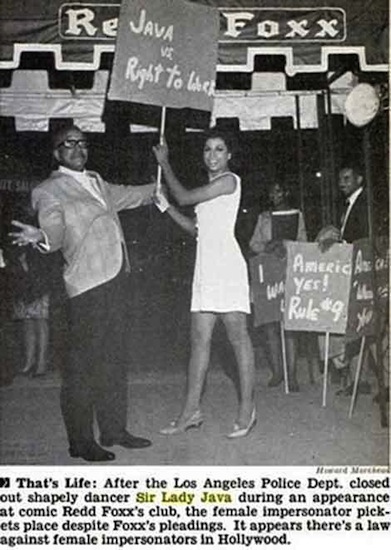
Sir Lady Java protesting at Redd Foxx’s club in Jet Magazine.
Born and raised in New Orleans, Java later moved to Los Angeles where she became a sensation due to her 38-24-38 curves, singing, impersonations and dancing. Rumor has it that she dated Redd Foxx and Sammy Davis, Jr. Shepublicly challenged the city’s “Rule No. 9,” the law that banned crossdressing, when she worked at legendary comedian Red Foxx’s club in LA. LAPD threatened to shut down Foxx’s club, and so Java’s act was cancelled. In 1967, however, she worked together with the ACLU to argue that the law was unconstitutional and that it was preventing her from earning an income. The legal challenge was thrown out, however, due to a technicality, but was covered by Black and gay publications, drawing important attention to the discriminatory law. Sir Lady Java is still alive today.
8. Crystal LaBeija
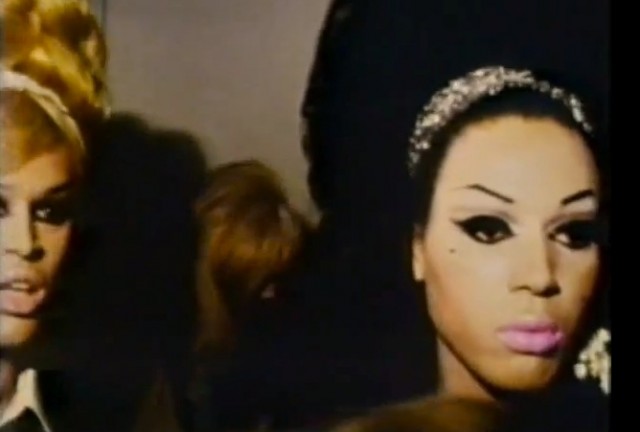
Crystal LaBeija in The Queen
The founder of the House of LaBeija, perhaps the first house in the New York Ball scene, The Legendary Crystal LeBeija is famously featured in the 1968 documentary The Queen and even makes an appearance in the opening credits of the Amazon Prime show Transparent. This documentary shows the 1967 Miss All-American Camp Beauty Pageant where LaBeija called out the host, Flawless Sabrina, saying that the ball was racist and fixed, after a white Queen, Rachel Harlow, was declared the winner. She founded the House of LaBeija in 1970 or 1972 when another drag queen, Lottie, asked her to promote a ball with her. LaBeija agreed when “Lottie made the deal sweeter by convincing Crystal that they should start a group and name it the House of LaBeija, with Crystal’s title as ‘mother.'” It may have been something of a PR stunt, but it started a revolution.
9. Angie Xtravaganza
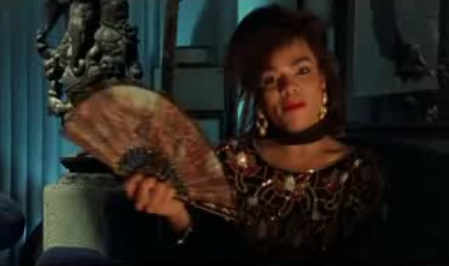
Angie Xtravaganza in Paris is Burning.
The longtime Mother of the Legendary House of Xtravaganza, the first primarily Latina House in New York’s Ballroom Scene. She was featured in the documentary Paris is Burning, where she was awarded a Mother of the Year trophy, talked about her House and her children. When she founded the House of Xtravaganza she was the youngest of the legendary mothers, a group containing herself, Pepper LaBeija (who took over after Crystal), Avis Pendavis, Dorian Corey and Paris Dupree. She died in New York at the age of 27 from AIDS complications and liver disease. She remained a mother up until the very end, and towards the end of her life she liked to say, “I have no regrets. No drag queen has carried herself the way I have. I’m not a beauty, but I’ve got class.”
10. Dorian Corey
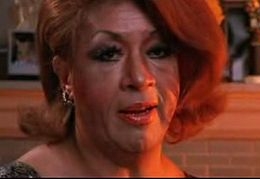
Dorian Corey in Paris is Burning.
Dorian is the guiding voice of Jennie Livingston’s Paris is Burning, laying down the law about shade, fame, beauty, houses and life in general, all while casually putting her face on. Outside of Paris, she was the mother of the House of Corey and was a Legendary participant in the balls of New York where she was famous for her extravagant costumes and won over 50 grand prizes throughout her life. She gives the poignant final lines of Paris, saying, “I always had hopes of being a big star. But as you get older, you aim a little lower. Everybody wants to make an impression, some mark upon the world. Then you think, you’ve made a mark on the world if you just get through it, and a few people remember your name. Then you’ve left a mark. You don’t have to bend the whole world. I think it’s better to just enjoy it. Pay your dues, and just enjoy it. If you shoot a arrow and it goes real high, hooray for you.”



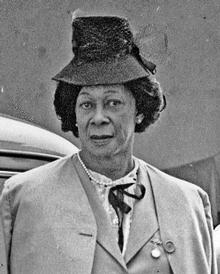
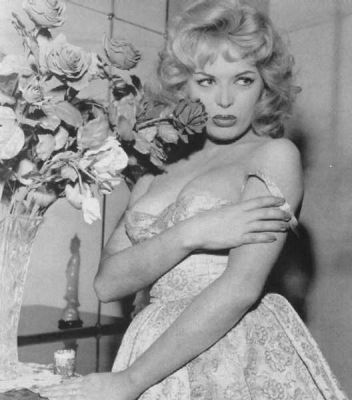


Δεν υπάρχουν σχόλια:
Δημοσίευση σχολίου
Εδώ σχολιάζεις εσύ - Comment Here
Σημείωση: Μόνο ένα μέλος αυτού του ιστολογίου μπορεί να αναρτήσει σχόλιο.